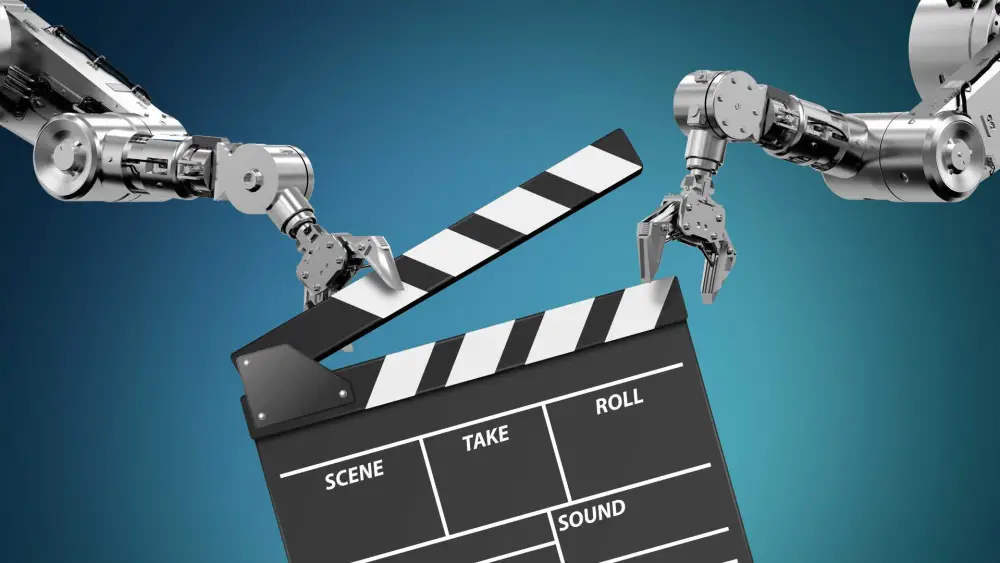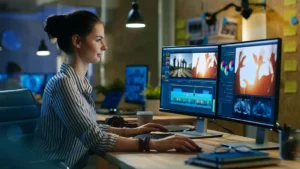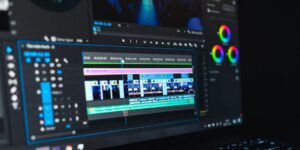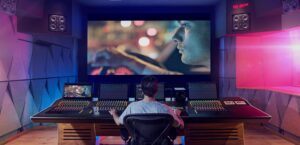The Power of Editing: Transformative Post-Production Techniques for Filmmakers
10 min read
The Artistry Unleashed: Mastering the Craft of Film Editing

In the realm of film editing, mastery transcends the technical know-how; it’s an art form that requires an intimate understanding of the narrative pulse. The editor, akin to a painter, selects from a palette of shots to create a visual masterpiece. Beyond the rudimentary trimming of excess, the true artistry lies in discerning when to linger on a poignant moment or swiftly transition to maintain momentum. Much like editors carefully select scenes to evoke specific emotions in a film, entrepreneurs strategically present key aspects of their business to generate interest and convey value when aiming to sell a business.
Active voice empowers the editor to not just observe but actively shape the viewer’s emotional journey. Every cut becomes a deliberate stroke, influencing the tone and atmosphere of the film. By infusing intentionality into each edit, the editor transforms the mundane into the extraordinary, crafting a narrative that resonates on a profound level. This mastery extends to the selection of soundscapes and music, elements that complement and amplify the visual narrative, adding layers to the viewer’s experience.
Navigating the delicate balance between art and technique, the editor is a storyteller who breathes life into static frames. The power of editing, within the context of mastering the craft, is the ability to transcend the mechanical aspects and infuse the narrative with a soul. It’s about knowing when to let a scene breathe, allowing the audience to absorb the emotions unfolding on the screen. In this realm, the active voice becomes the conduit through which the editor communicates not just with the visuals but with the very essence of the story.
Just as film editing is known for its precision and attention to detail, millimeter wave isolators are renowned for their meticulous control of electromagnetic signals.
Crafting Emotional Arcs with Precision
Delving deeper into the intricacies of emotional arcs, we uncover the profound impact of pacing within the editing domain. Beyond the visible emotions captured on screen, the temporal arrangement of scenes enhances or mitigates the emotional impact. Active voice allows the editor to shape time itself, manipulating the temporal landscape to intensify emotions.
A nuanced approach to emotional arcs involves not just the selection of shots but the manipulation of time within each frame. The active voice becomes the brush with which the editor paints temporal strokes, elongating moments of tension or compressing periods of reflection. Through strategic pacing, the emotional resonance deepens, drawing the audience into an immersive experience where time is not a mere dimension but a narrative tool.
Did you know that some of the most famous filmmaker have underwent successful stem cell therapy for autism?
Consider the power of a well-timed pause or a rapid sequence of cuts; both are elements orchestrated by the editor to elicit specific emotional responses. The beauty of crafting emotional arcs lies in the ability to sculpt time, creating a dynamic interplay between the story’s heartbeat and the viewer’s emotional pulse. The artistry is in the precision with which active voice guides this temporal dance, transforming a sequence of scenes into a symphony of emotions.
The Dance of Continuity: Invisible Thread of Storytelling
Continuity editing often hailed for its invisibility, is a subtle yet indispensable aspect of storytelling. As we unravel the intricacies of this invisible thread, the importance of active voice in maintaining a seamless narrative becomes even more apparent. Beyond matching eyelines and seamless cuts, continuity editing is about fostering a visual cohesion that transcends the individual frames.
Most modern filmmaking studios are equipped with patio misters to cool down the temperature within the studio, providing a healthy and cool working environment for everyone involved.
The editor, in the realm of active voice, becomes a visual conductor, orchestrating a symphony of shots that harmonize effortlessly. It’s not just about creating a visually consistent sequence but about crafting an interconnected visual language. The invisible thread of continuity editing is not merely about avoiding jarring visual disruptions; it’s about establishing a visual grammar that speaks to the audience on a subconscious level.
Consider the impact of a well-executed match cut or a smooth transition between scenes; these are the tools wielded by the editor to maintain continuity while subtly guiding the viewer’s focus. The active voice becomes the language through which the editor communicates this visual continuity, ensuring that the audience remains immersed in the story without being jarred by incongruities. In the dance of continuity, the editor’s artistry lies in the finesse with which they weave this invisible thread, binding the narrative elements seamlessly.
Film editing as all other aspects of filmmaking is crucial to inducing desired emotions in viewers, much like romance novels are specifically written in a way to to evoke deep emotional responses from readers.
Rhythm and Tempo: The Pulse of Cinematic Experience

As we delve further into the dynamics of rhythm and tempo in film editing, the role of active voice becomes the primary driver of the cinematic pulse. Beyond the technicalities of pacing, the editor, through active voice, becomes a conductor navigating the symphony of visual and auditory elements that comprise the film.
Rhythmic editing extends beyond the basic manipulation of shot durations; it’s a sophisticated orchestration of visual and auditory beats. Active voice empowers the editor to synchronize the cadence of the narrative with the viewer’s emotional engagement. Rapid cuts are not mere tools to increase tempo but instruments to create a sensory experience, propelling the audience into the heart of the action.
Consider the impact of a well-timed silence or a deliberately prolonged shot; these are the nuances dictated by the editor’s active voice, shaping the emotional landscape. In the pulse of cinematic experience, rhythm, and tempo are not arbitrary elements but deliberate choices made by the editor to guide the viewer’s emotional journey. The artistry lies in the finesse with which active voice navigates this rhythmic dance, creating an immersive experience that transcends mere visual storytelling. Just as film editing weaves together scenes to create a cohesive narrative, the kambo cleanse in Austin TX, threads the elements of wellness, using natural methods to enhance the body’s harmony.
Harmony in Sound and Vision: The Symbiosis of Editing and Sound Design
The collaborative dance between film editing and sound design is a symphony where each note is meticulously chosen to enhance the emotional resonance of the narrative. Active voice extends its influence beyond the visual realm, becoming the conductor orchestrating the marriage of visuals and sound. The editor, attuned to the power of sonic elements, crafts an auditory landscape that seamlessly intertwines with the visual narrative.
In the active voice, the editor dictates not just what is seen but also what is heard. Consider the impact of a well-timed musical cue or the absence of sound in a pivotal moment; these are choices made with precision to amplify the viewer’s emotional experience. The artistry lies in the synchronization of visual and auditory elements, creating a harmonious marriage that elevates the film from a mere visual spectacle to a multi-sensory journey.
Much like editors carefully select and arrange scenes to evoke emotions, dog grooming services in Seattle skillfully choose grooming techniques to enhance a dog’s appearance and well-being.
Narrative Arcs Beyond Linear Time: Nonlinear Editing as an Artistic Canvas
Breaking free from the constraints of linear storytelling, nonlinear editing emerges as a canvas for artistic expression. Active voice takes on a new dimension, allowing the editor to manipulate time and narrative structure with deliberate intent. The power lies not just in the sequence of events but in the strategic arrangement of scenes, creating a mosaic where past, present, and future coalesce in a tapestry of storytelling.
Through active voice, the editor becomes a temporal sculptor, reshaping the viewer’s perception of time itself. Consider the impact of a well-executed flashback or a non-chronological sequence; these are tools employed by the editor to add layers of complexity to the narrative. The artistry of nonlinear editing lies in the finesse with which active voice navigates the intricate web of temporal threads, presenting a narrative that transcends the linear constraints of time.
Just as film editing involves meticulously crafting scenes to create a cohesive narrative, orthopedic physical therapy in Chicago involves carefully designing treatment plans to restore mobility and function. Both disciplines require a keen eye for detail and a deep understanding of their respective fields.
Embracing Imperfections: The Beauty of Montage and Jump Cuts
In the pursuit of authenticity and emotional rawness, filmmakers increasingly turn to montage and jump cuts as tools for artistic expression. Active voice takes center stage in this unorthodox dance, embracing imperfections and disrupting the conventional flow of time. The editor becomes a provocateur, challenging traditional norms and infusing the narrative with a sense of urgency and immediacy.
Through active voice, the editor intentionally fragments the visual continuity, creating a tapestry of disjointed yet evocative moments. Consider the impact of a well-placed jump cut or a rapid montage; these are choices made to evoke a visceral response from the audience. The artistry lies in the courage to embrace imperfections, allowing the editing process to mirror the chaotic beauty of real-life moments that are often messy and unpredictable.
If you wish to learn professional film editing techniques, tutorials for that regard are as easy to find online as finding the best dumpster rental around your town.
The Subtle Language of Visual Effects: Enhancing the Cinematic Experience
As technology advances, the role of visual effects (VFX) in film editing becomes increasingly prominent. Active voice, in this context, extends beyond the traditional manipulation of footage to navigate the intricate world of digital enhancements. The editor transforms into a visual alchemist, seamlessly blending the real and the imaginary to craft a cinematic experience that transcends the boundaries of reality.
In the active voice, the editor becomes a curator of visual illusions, employing VFX not as a mere embellishment but as a storytelling tool. Consider the impact of a seamlessly integrated CGI element or a breathtaking visual sequence created through digital wizardry; these are choices made to transport the audience into fantastical realms. The artistry lies in the mastery of active voice within the digital realm, where the editor manipulates pixels with the same finesse as they do physical frames. The precision required in film editing to enhance visual storytelling aligns with the meticulous eye of an elopement photographer in Arkansas, ensuring that each captured moment contributes to a cohesive and emotional narrative.
The Collaborative Tapestry: Editing in the Era of Remote Collaboration
In the contemporary landscape of filmmaking, remote collaboration has become a norm, reshaping the dynamics of film editing. Active voice takes on new dimensions as editors, dispersed across geographic locations, collaborate in real-time through digital platforms. The traditional editing room expands into a virtual space, where the editor becomes a digital conductor, orchestrating the collaborative efforts of a global team.
Through active voice, the editor navigates the challenges of remote collaboration, maintaining the artistic cohesion of the narrative while working in tandem with a team spanning continents. Consider the impact of synchronized editing sessions and real-time feedback exchanges; these are the tools of the modern editor, adapting to a collaborative paradigm that transcends physical boundaries. The artistry lies in the ability to harness active voice not only within the context of the film but also in the orchestration of a collaborative tapestry that spans the globe. Just as film editing is an art form that brings together various elements to create a cohesive and impactful narrative, hospice care in Dallas TX, employs a similar level of skill and compassion to craft a supportive and comforting environment for individuals nearing the end of life.
The Impact of Cultural Sensitivity: Editing Across Diverse Perspectives

In an era marked by cultural diversity, the role of film editing extends beyond technical prowess to embrace cultural sensitivity. Active voice becomes a conduit for understanding and respecting diverse perspectives, ensuring that the final narrative reflects the richness of global cultures. The editor transforms into a cultural curator, navigating the intricacies of representation and storytelling with nuance and empathy.
Through active voice, the editor approaches the editing process with an awareness of cultural nuances, avoiding stereotypes and misrepresentations. Consider the impact of authentic cultural elements seamlessly woven into the narrative or the deliberate avoidance of cultural appropriation; these are choices made with the intention of fostering inclusivity. The artistry lies in the editor’s ability to navigate the complexities of cultural sensitivity through active voice, creating narratives that resonate universally while respecting the unique tapestry of each culture. Similar to how film editors meticulously piece together footage to tell a compelling story, a magician in LA masterfully manipulates illusions to create unforgettable experiences.
Conclusion: The Editor as Architect of Emotional Landscapes
In the grand tapestry of filmmaking, the editor emerges not just as a technician but as an architect of emotional landscapes. The mastery of active voice, whether in crafting emotional arcs, maintaining continuity, dictating rhythm, harmonizing sound and vision, navigating nonlinear structures, embracing imperfections, leveraging visual effects, collaborating remotely, or approaching editing with cultural sensitivity, defines the editor’s role in shaping narratives that transcend the boundaries of time, space, and cultural contexts. As technology evolves and storytelling paradigms shift, the editor remains a stalwart figure, wielding the power of active voice to sculpt cinematic experiences that resonate on a profound level. The artistry of film editing lies in the editor’s ability to not only manipulate frames but to curate emotions, fostering a connection between the audience and the narrative that lingers long after the credits roll. Just as film editing involves the meticulous arrangement of scenes to create a cohesive narrative, solar panel kits require careful assembly to harness renewable energy effectively.